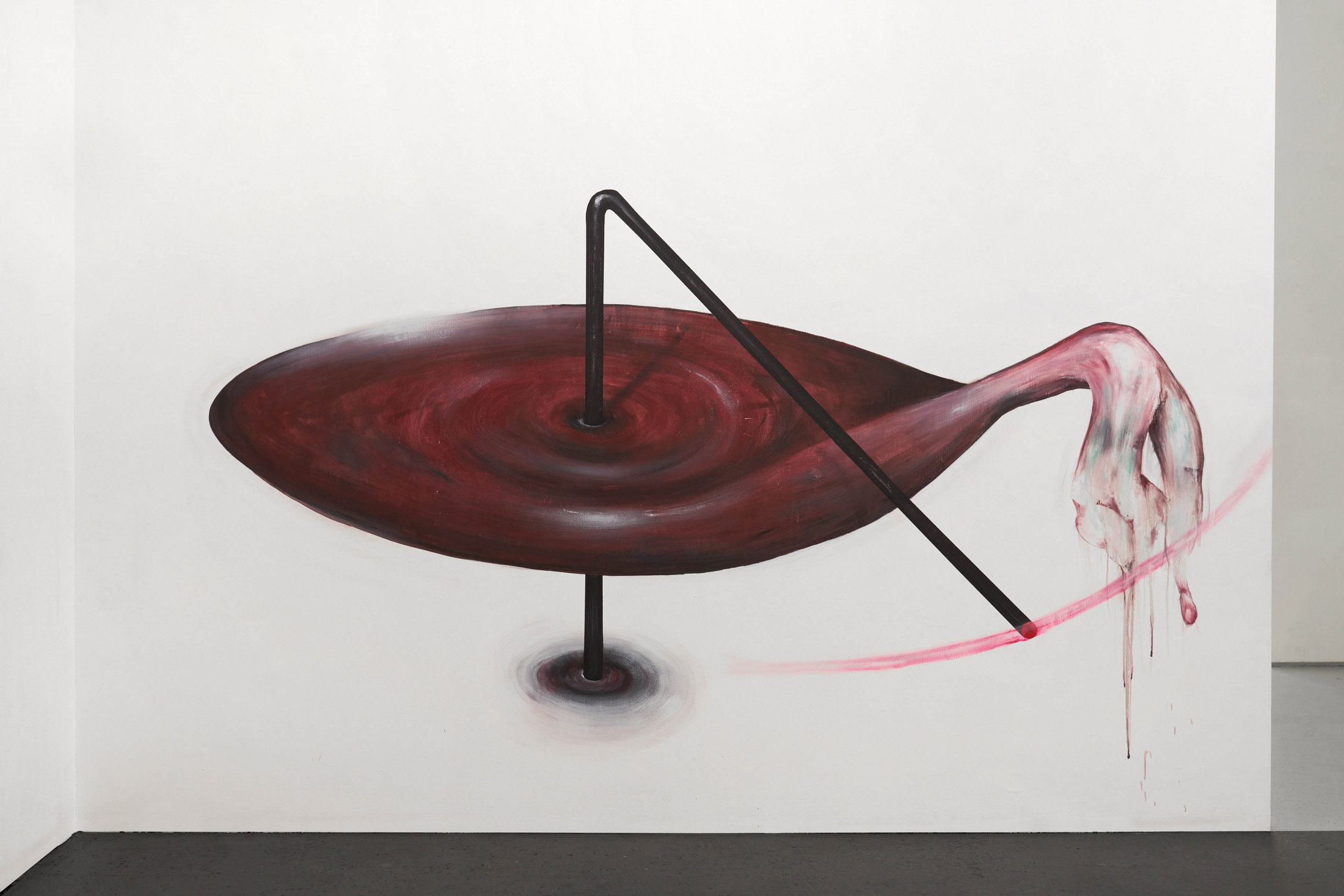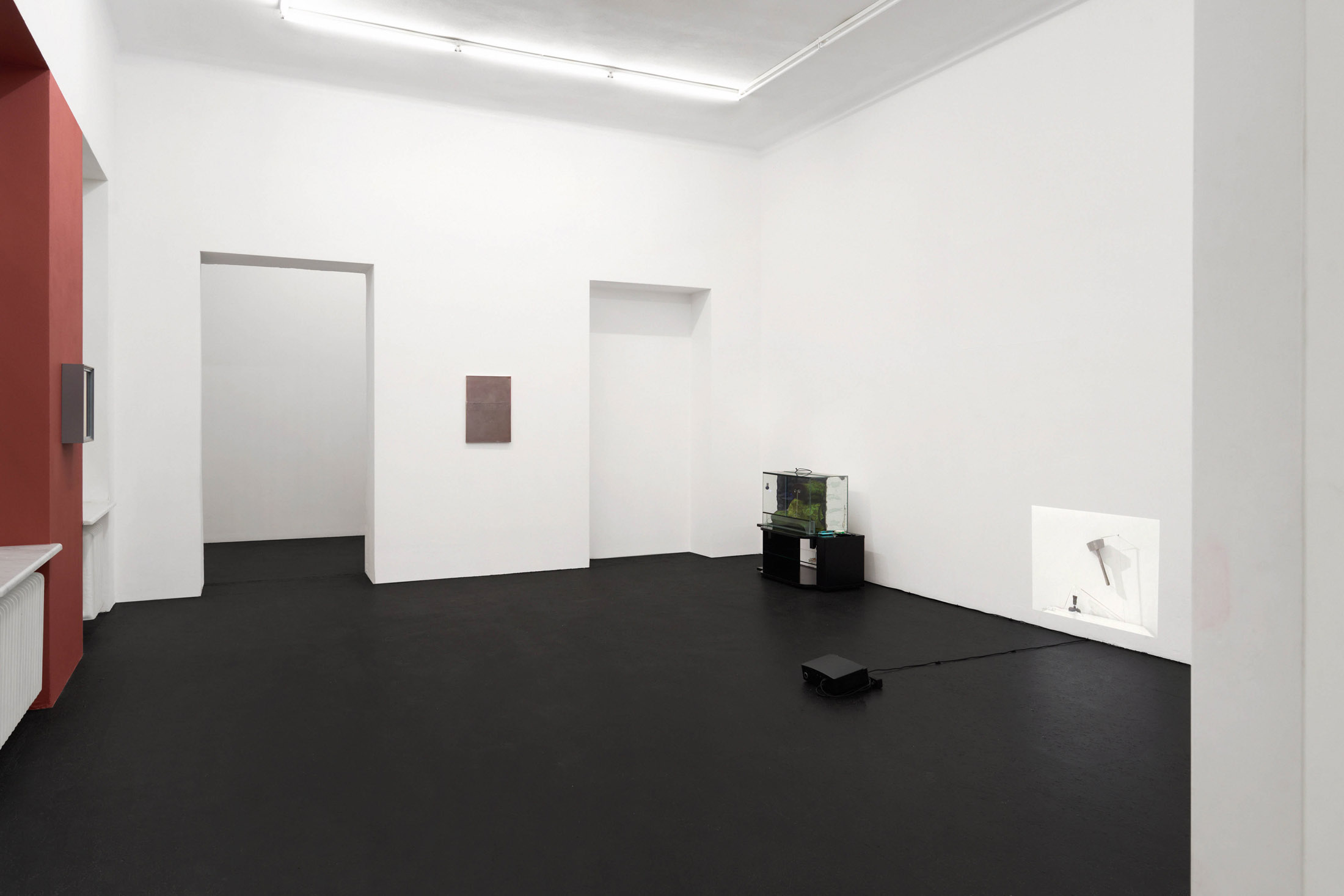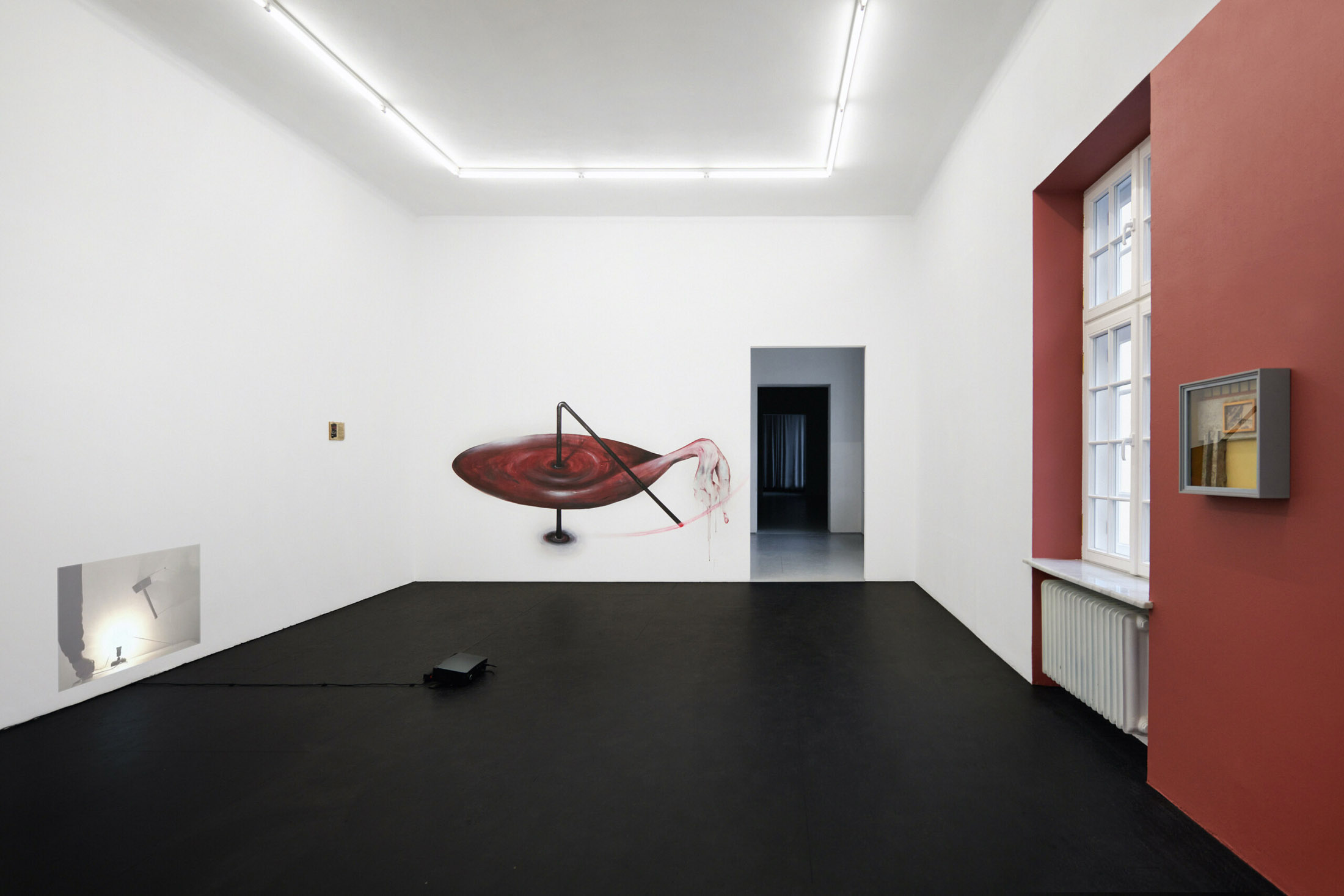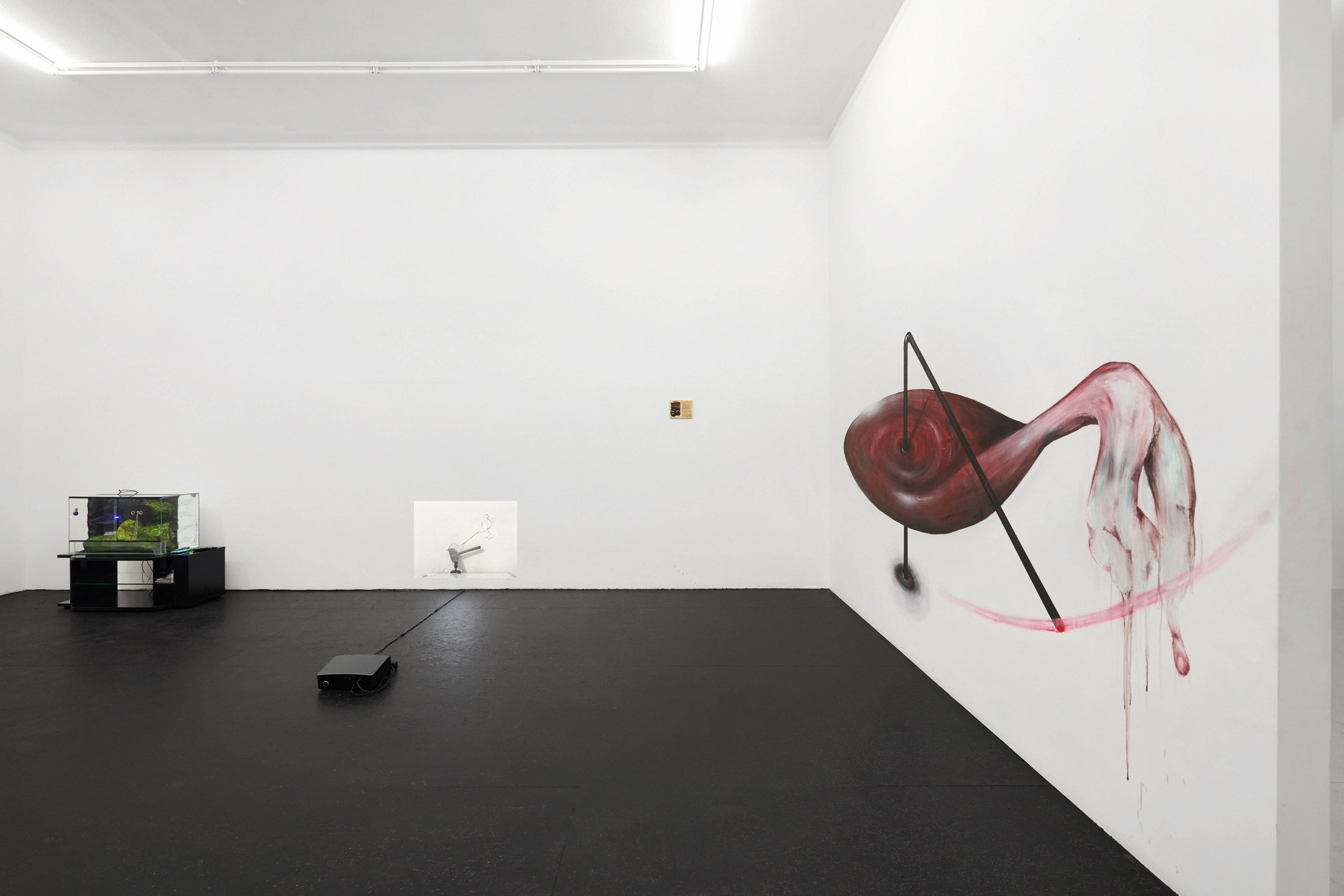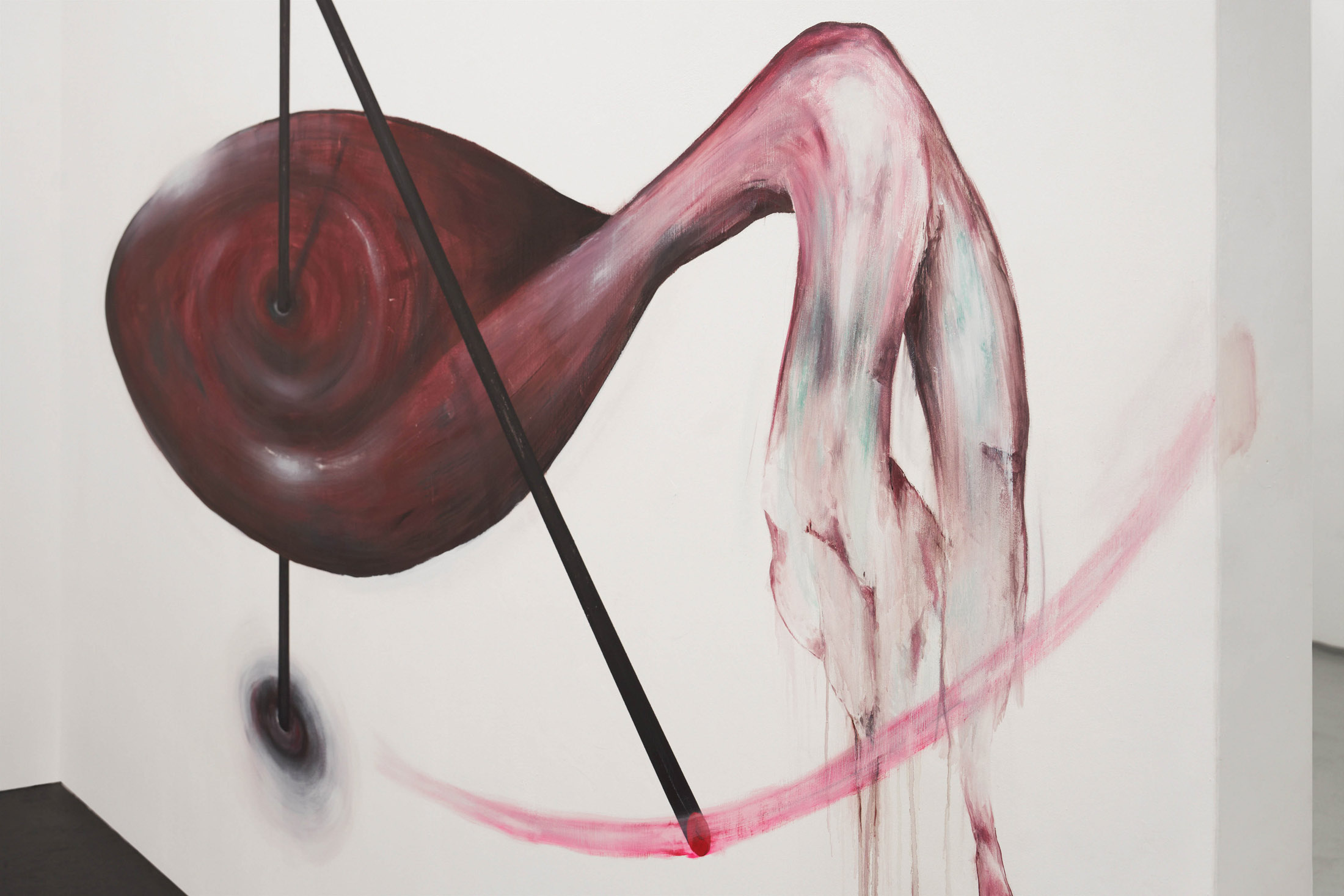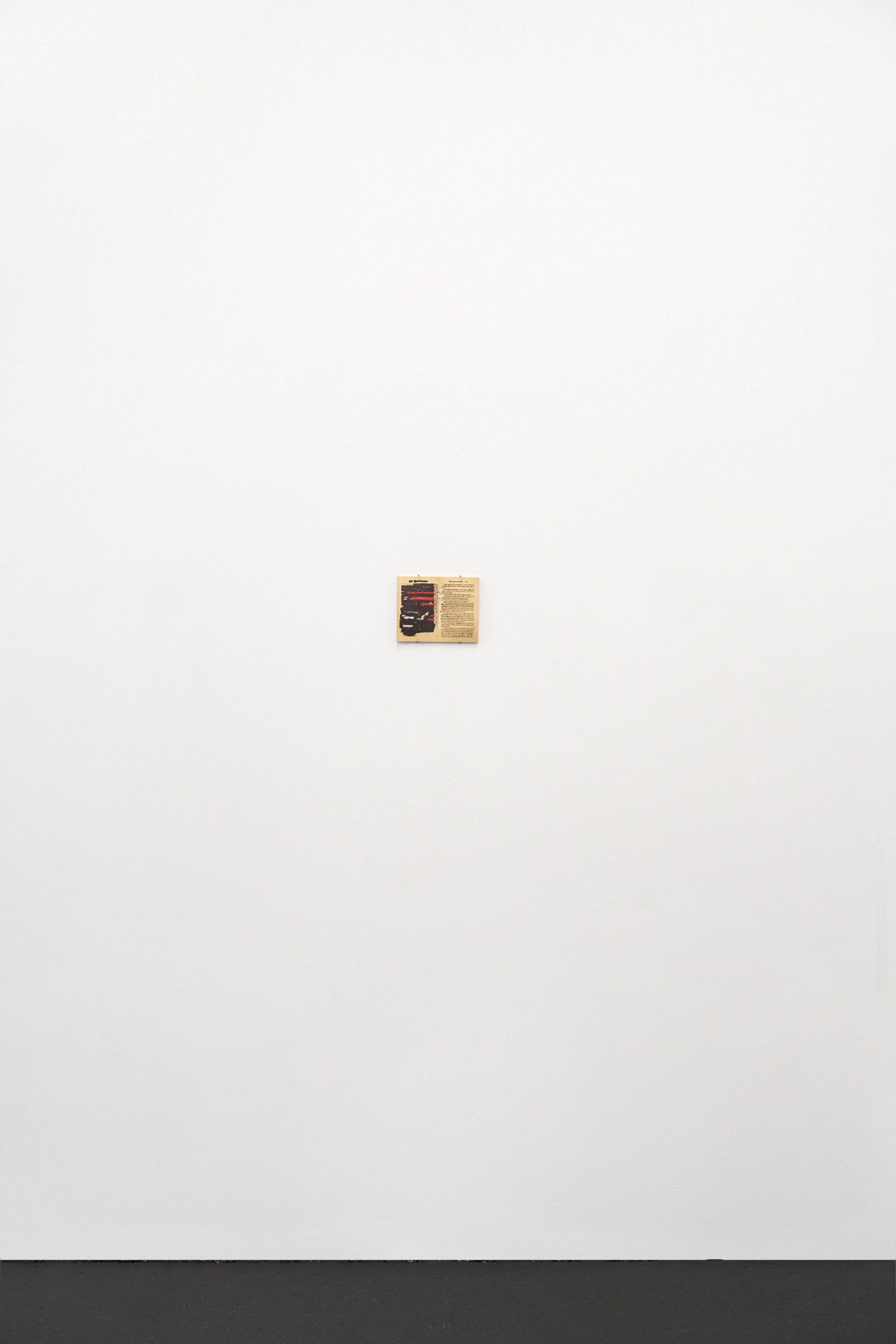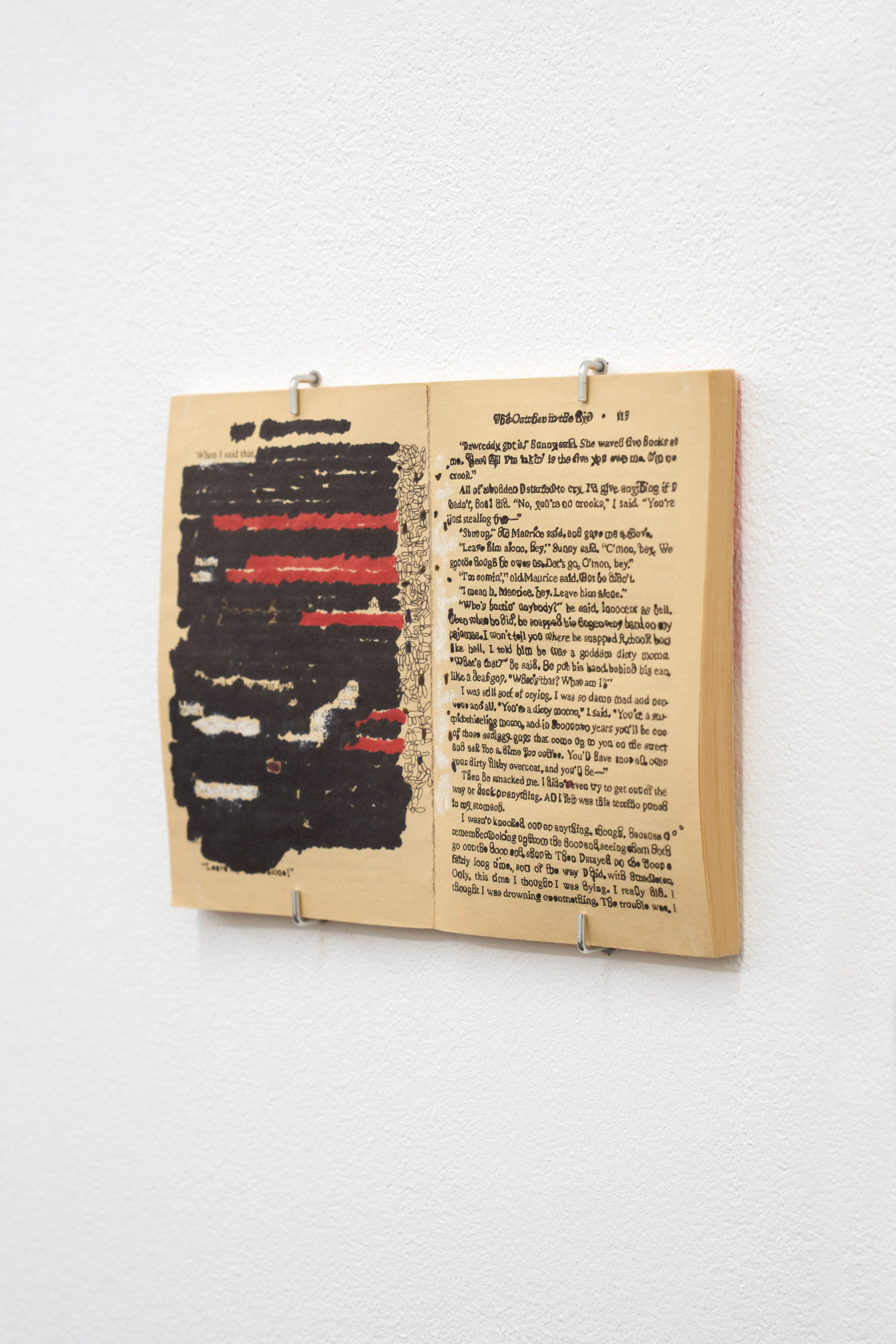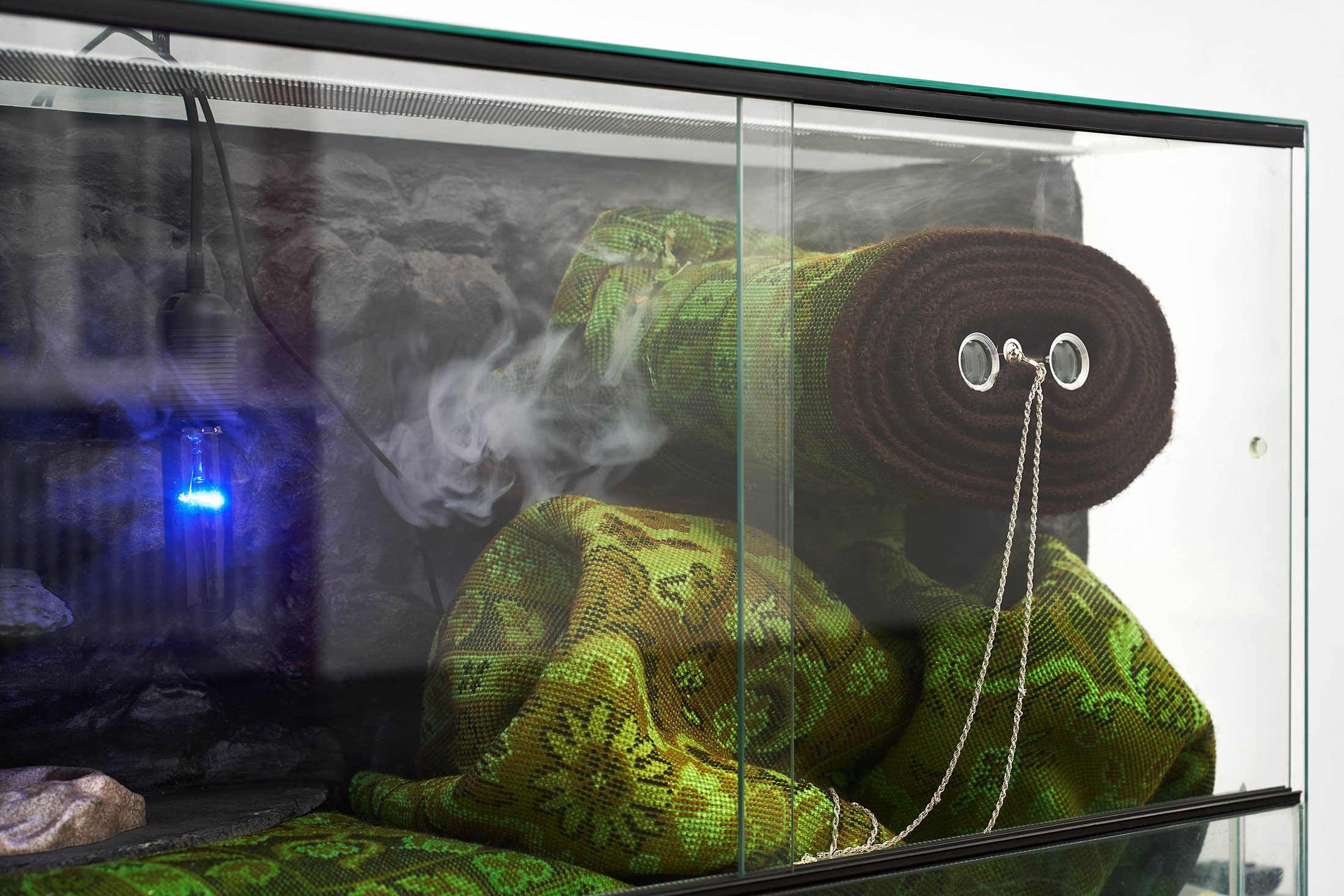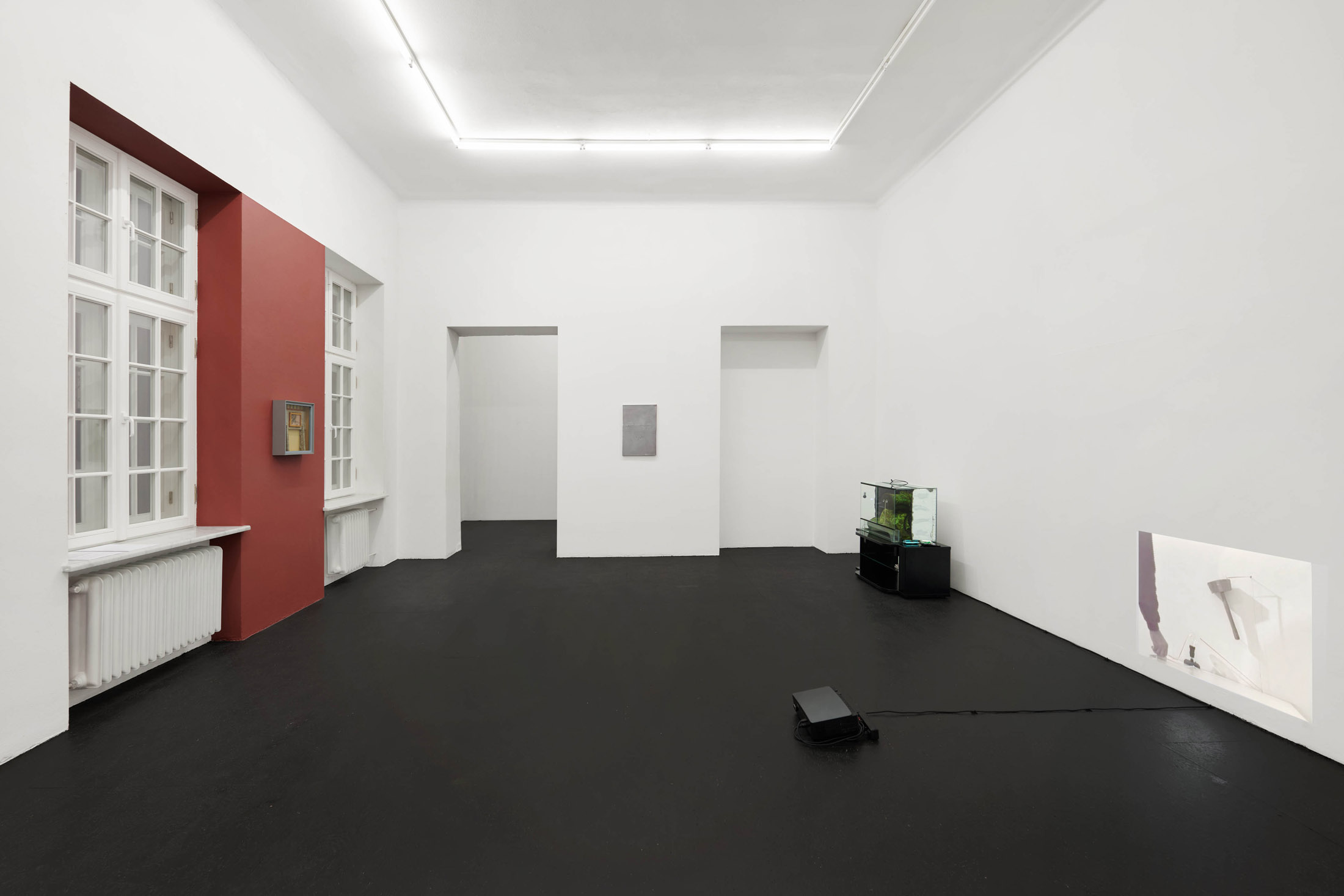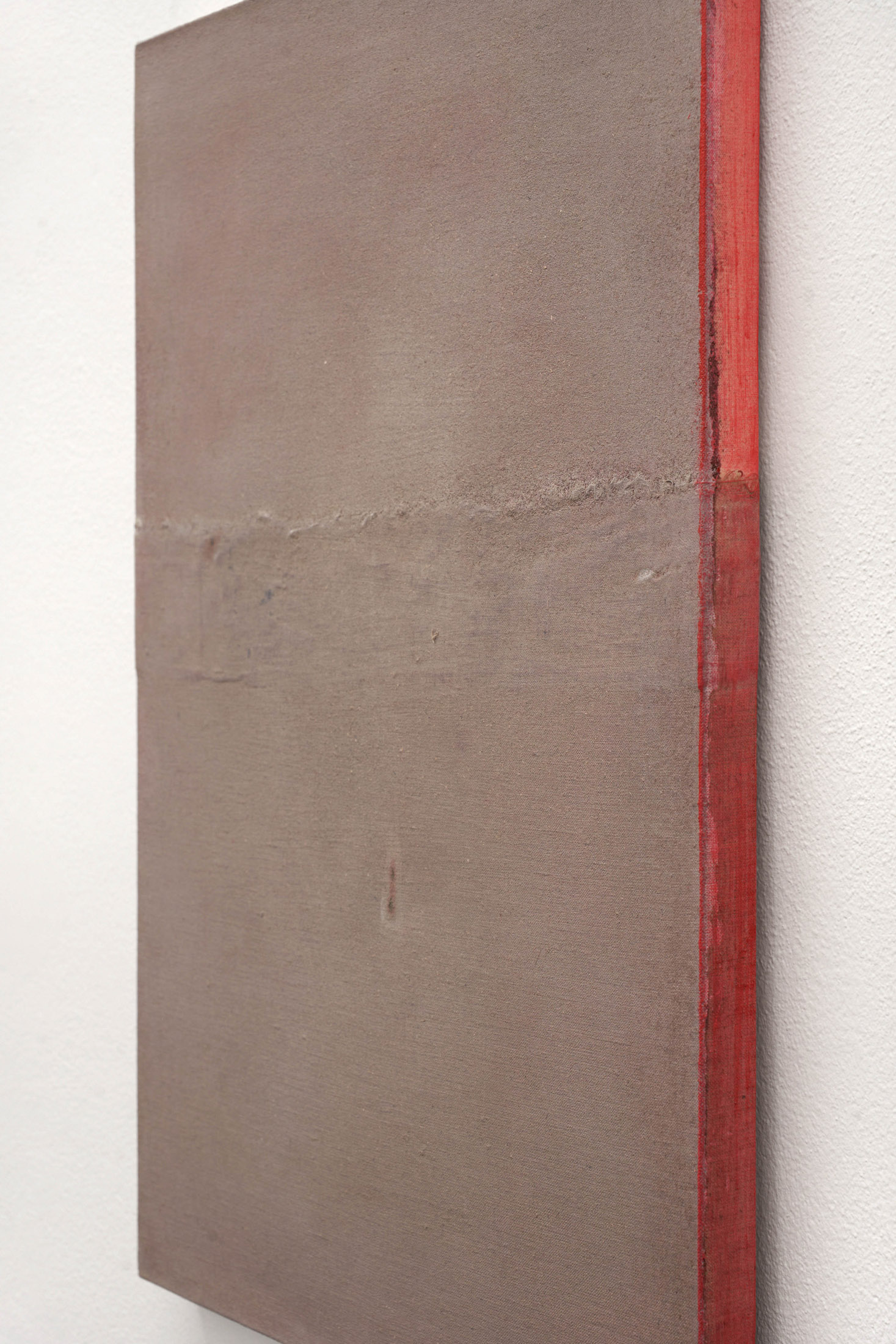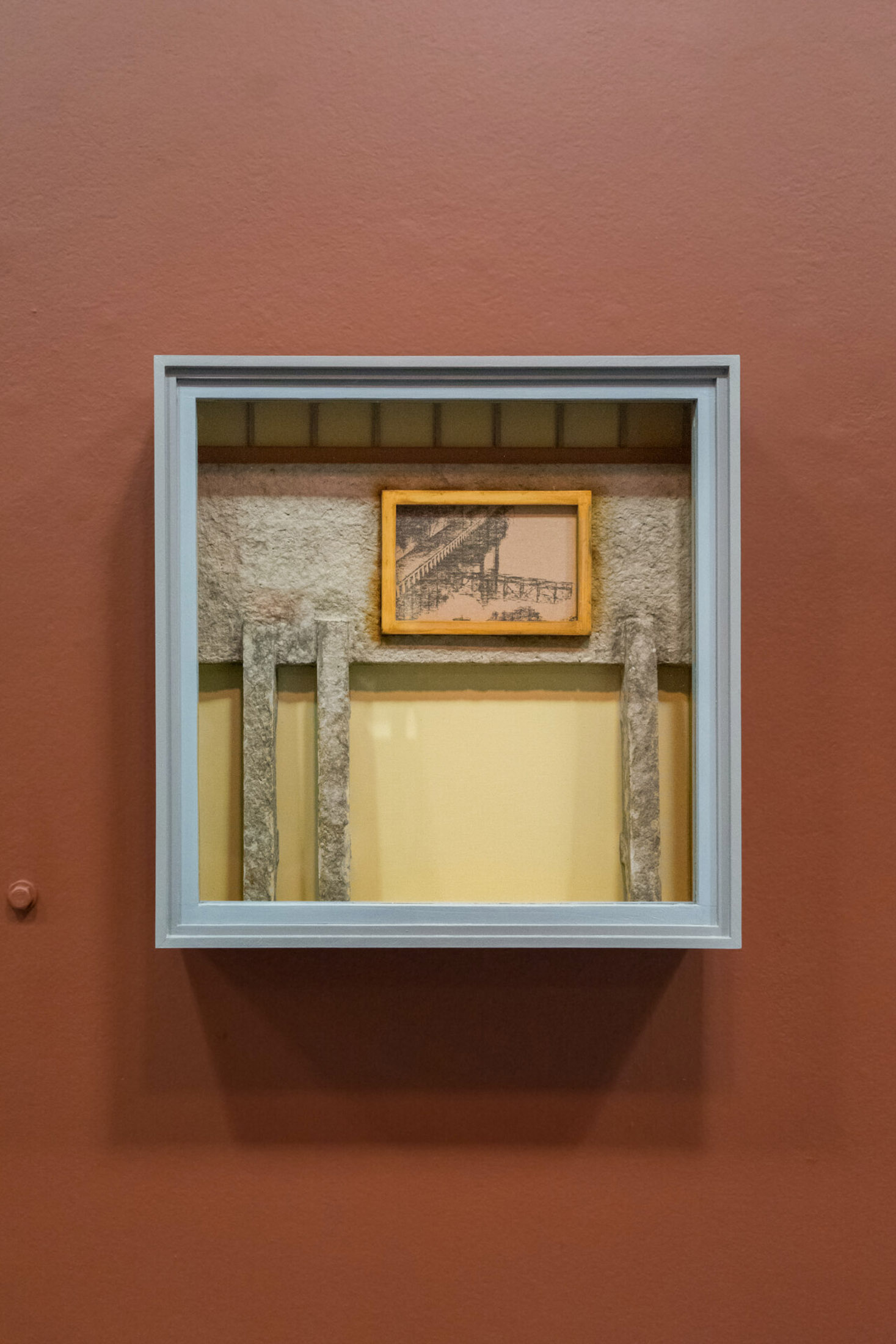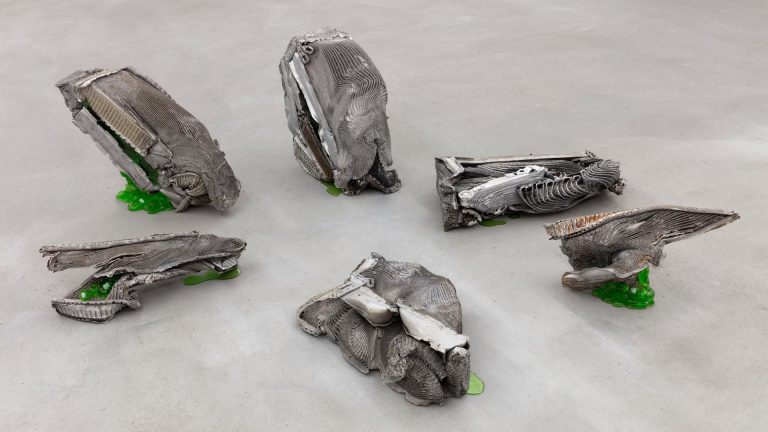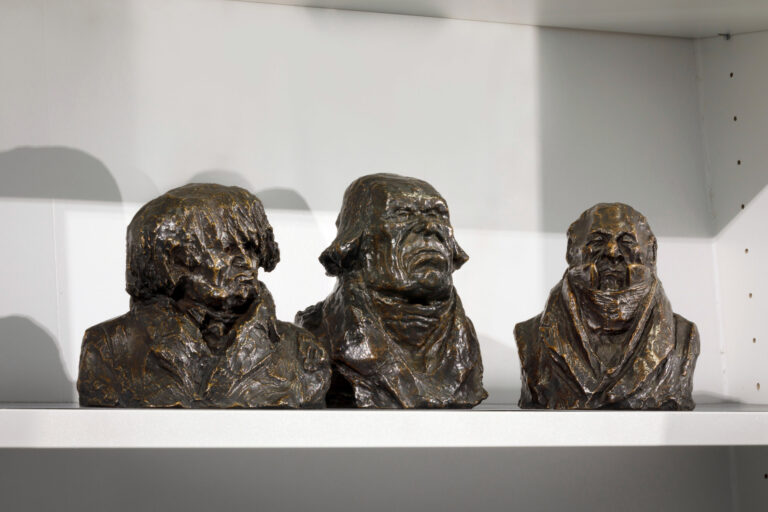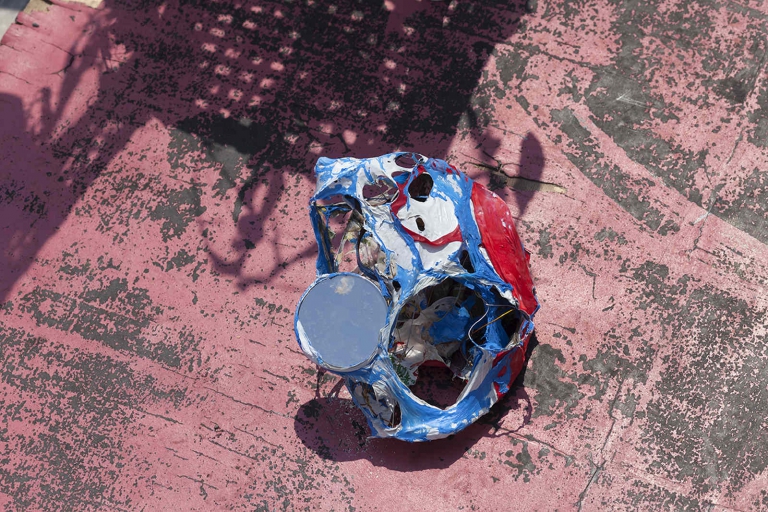Artists: Merlin James, Piotr Janas, Igor Krenz, Kazuki Matsushita, Cezary Poniatowski, Adam Shiu-Yang Shaw
Exhibition title: Obsession II
Venue: Wschód, Warsaw, Germany
Date: November 18, 2023 – January 20, 2024
Photography: Courtesy the artists and Wschód, Warsaw/New York
This show acts as a continuation of the conversation we have begun with the exhibition Obsession I. This series invites contemplation of obsession as an integral part of the artistic pursuit. The theme is understood as a way of practicing art rather than as a characteristic of an artwork. We stray away from imposing a singular meaning of an obsessive practice, but rather we approach the theme from within, testing what forms and meanings it may embody. We are pleased to present works by Merlin James, Piotr Janas, Igor Krenz, Kazuki Matsushita, Cezary Poniatowski, and Adam Shiu-Yang Shaw. The interplay between these works situates obsession as a theme that somehow lurks in the background. It does not immediately emerge into view but has an oscillating presence that, at some moments, speaks loudly and at others whispers in the distance.
In Kazuki Matsushita’s (b. 1992 Tokyo, Japan) practice, the title is as inherent to the artwork as is the physical object. Matsushita works with language, invoking the method of the anagram: a word or phrase is formed by rearranging the letters of a different word or phrase to alter its meaning. This method triggers a playful engagement from the viewer. There is an urge to write down Matsushita’s titles and cross them out letter by letter to track the process of how the new meaning emerged. The anagram technique opens up an array of new possibilities yet simultaneously leaves us enclosed within a system. “With N different letters, there are N factorial ways of rearranging them” (Matsushita). The process unravels a gaze that always sees in multiplicity. We become embedded in an atmosphere of unrest where language is granted the space to fluctuate and hesitate through meanings and arrangements.
Piotr Janas (b. 1970 Warsaw, Poland) surrealist language carries a strong visceral charge. For this show, Janas renders Wschód’s gallery wall as his canvas. The artist uses the lyrics from the band Ministry’s song N.W.O. to describe the work:
„It’s alright, it’s alright
It’s alright, it’s alright
I’m in love without the tears of regret Open fire ‘cause I love it to death”
Janas’ forms fluctuate between beauty and disgust, blurring the lines separating these states. The artist subjects the canvases to a kind of physical or mental abrasion, creating forms that are densely bleeding out from within. The bizarre flesh seen in Loop (N.W.O.) is pierced through with a kind of rod that dances around it. The violence of the gesture communicates a sense of corporeality although nobody is formally delineated. The elicited atmosphere is unsettling but it’s alright, it’s alright. Let’s allow for this state to linger.
Adam Shiu-Yang Shaw (b. 1987 Edmonton, Canada) is interested in the past lives of objects which he then reactivates in his works. His installations draw in part from exhausted castaway materials, sourced from street corners, empty lots, and reuse stores. A single work becomes home to a confluence of places and their accompanying narratives. Portals I invokes a form of an ethnographic-style museum vitrine. Inside it, we see a photograph of Berlin’s VAUBEKA portal crane – the city’s largest historic crane system, located in the Tempelhof district. Unlike the rest of the cranes that were renewed, this part of it was left untouched, personifying a time capsule. Shaw creates a sense of nostalgia but simultaneously counters it with his gestures. The fuzziness of the memories embedded in the objects is contrasted with a visual language of meticulous precision.
Merlin James’ (b. 1963 Cardiff, United Kingdom) evocative brushwork and multidimensional explorations delve into the physicality of painting. Sea Wall acts as a point of relaxation within the space of Obsession II. The subtlety of the tones along with the absence of figurative forms soothes the senses. This emerges as a specific moment in the exhibition where the viewers are given the space to inspect the theme at hand from a softer side. The states typically associated with obsession – insanity, dynamism, abundance – are rendered docile here. The deliberate absence of overt narrative compels a deeper introspection, beckoning individuals to explore the nuances of fixation beyond the echoes of its direct expressions. This allows for a further opening up of what forms an obsessive practice may take. Perhaps we are the most exposed to our manias when we take a step back and allow for a moment of stillness and silence.
Igor Krenz (b.1959 Katowice, Poland) embodies a bizarre scientist in his practice. He draws from the aesthetics characteristic of scientific experiments. Yet while those typically carry an educational and serious tone, Krenz invites ridiculing in his process. The artist carefully arranges objects into sites for experimentation, and the audience must patiently await the outcome of a given action. Light Turns Off The Light portrays one of such projects. The artist implicates the props as subjects that undergo a liminal study. An overwhelming sense of absurdity accompanies the scene that plays out before us. Krenz attentively crafts this response. He uses tools that appear in most homes but at the same time robs them of their ordinariness. Through the odd curation, the hammer and lamp both acquire an ephemeral presence. Then in a split second, the impact happens, and boom… they’re gone.
Cezary Poniatowski’s (b. 1987 Olsztyn, Poland) practice emblematizes a fascination with a distortion of materials that is visceral. He works with objects that relate to Socialist Poland’s history, for example, constructing sculptures from foam once used to insulate houses in the Soviet Bloc. For Untitled (Bulk) Poniatowski takes scraps from his previous works and locks them within an aquarium that he then encloses with more sealing layers. Instead of letting go of the scraps he places them within this structure and continues to build onto it. There is an obsessive sensibility that deems his practice a dynamically moving continuation. The endpoint seems a distant concept. Indeed, Poniatowski obtrusively modifies, overadds, changes, and reconfigures the nature of the materials to such an extent that they completely lose their original rhythm. What we’re left with is a palimpsest of a palimpsest.
-Mela Miekus
Obsession II, 2023, exhibition view, Wschód, Warsaw
Obsession II, 2023, exhibition view, Wschód, Warsaw
Obsession II, 2023, exhibition view, Wschód, Warsaw
Piotr Janas, Loop, 2023, acrylic on wall, dimension variable
Piotr Janas, Loop, 2023, acrylic on wall, dimension variable
Kazuki Matsushita, When I said that, when I shit DATA , 2018, marker on paper, 21 x 17 cm
Kazuki Matsushita, When I said that, when I shit DATA , 2018, marker on paper, 21 x 17 cm
Obsession II, 2023, exhibition view, Wschód, Warsaw
Igor Krenz, Light Turns off the Light, 1994, 1’14” with sound
Cezary Poniatowski, Untitled (Bulk), 2023, terrarium, tv table, carpet, theatre binoculars, drinking fountain, night heat lamp, magazine, rubber doormat, remote controller, tobacco pouch, thermometer, post-it note, smoke, sound, 97 x 114.5 x 51.5 cm
Cezary Poniatowski, Untitled (Bulk), 2023, terrarium, tv table, carpet, theatre binoculars, drinking fountain, night heat lamp, magazine, rubber doormat, remote controller, tobacco pouch, thermometer, post-it note, smoke, sound, 97 x 114.5 x 51.5 cm
Obsession II, 2023, exhibition view, Wschód, Warsaw
Merlin James, Sea Wall, 2021-22, acrylic on canvas, 61.5 x 42 cm
Obsession II, 2023, exhibition view, Wschód, Warsaw
Adam Shiu-Yang Shaw, Portals I, 2023, wood, MDF, glass, ink transfer on cardboard, water-based enamel paint, latex paint, wood glue, 5 x 43.5 x 10 cm

